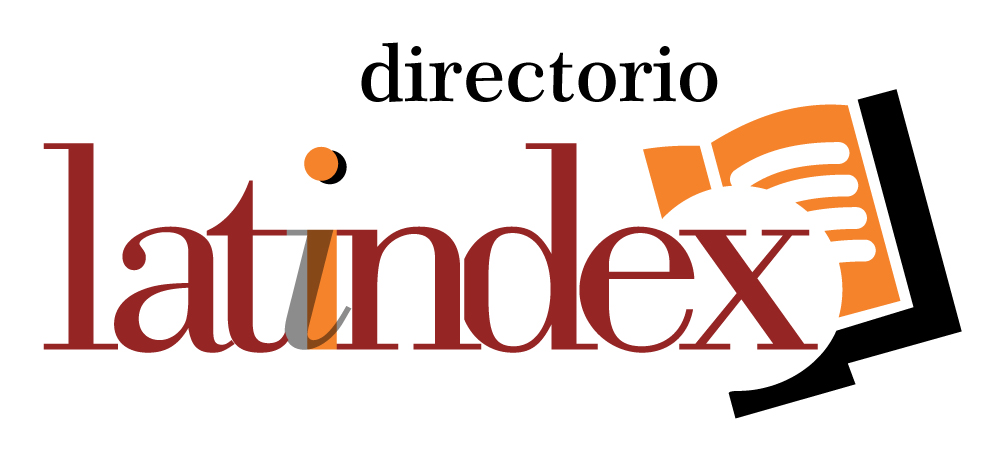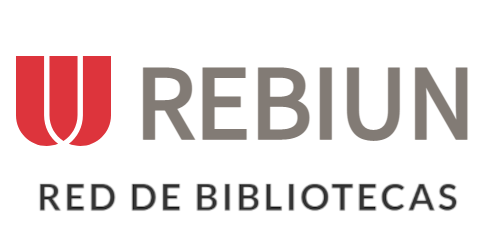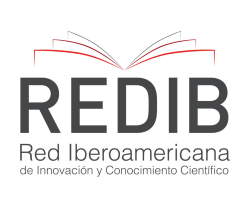Tratamiento Quirúrgico de Hiperplasia Condilar mediante Abordaje Intraoral, Reporte de Caso
Resumen
Introducción: La hiperplasia condilar es una entidad patológica caracterizada por el crecimiento progresivo del cóndilo mandibular, cuyas manifestaciones clínicas abordan, asimetrías faciales, disfunción temporomandibular, anomalías ocluso-funcionales y estética facial. Reporte de caso: Paciente femenina de 17 años de edad acude a consulta al servicio de Cirugía Maxilofacial por asimetría facial mandibular progresiva, Paciente en conjunto con análisis clínicos e imagenológicos necesarios se llega al diagnóstico de Hiperplasia condilar. La paciente es tratada por medio de condilectomía proporcional mediante abordaje intraoral, más el manejo posterior multidisciplinario con ortodoncia. Conclusiones: Las hiperplasias condilares son patologías que se encuentran muy frecuentes en nuestra sociedad, las múltiples técnicas y tratamientos son reportados, el abordaje intraoral es una de las alternativas que utilizamos para el tratamiento de nuestra paciente en base a los beneficios proporcionados por la técnica.
Descargas
Citas
Sedano Balbin G, Pérez Vargas F, Romero Tapia P. Hiperplasia condilar, un enfoque actual del diagnóstico y tratamiento. Revisión de la literatura. Odontol Sanmarquina [Internet]. 2019 May 31 [cited 2024 Mar. 3];22(2):132-9. Available from:
https://revistasinvestigacion.unmsm.edu.pe/index.php/odont/article/view/16226
Boza Mejias Yordany, Mesa Reinaldo Bienvenido, Villa Osmany. Hiperplasia condilar. Presentación de un caso. Medisur [Internet]. 2012 Feb [citado 2024 Mar 03]; 10(1): 61-65.
Disponible en:
http://scielo.sld.cu/scielo.php?script=sci_arttext&pid=S1727-897X2012000100011&lng=es.
López B Diego Fernando, Corral S Claudia Marcela. HIPERPLASIA CONDILAR: CARACTERÍSTICAS, MANIFESTACIONES, DIAGNÓSTICO Y TRATAMIENTO. REVISIÓN DE TEMA. Rev Fac Odontol Univ Antioq [Internet]. 2015 June [cited 2024 Mar 03]; 26( 2 ): 425-446. Available from:
http://www.scielo.org.co/scielo.php?script=sci_arttext&pid=S0121-246X2015000100011&lng=en.
Nitzan, D. W., Katsnelson, A., Bermanis, I., Brin, I., & Casap, N. The clinical characteristics of condylar hyperplasia: experience with 61 patients. Journal of oral and maxillofacial surgery: official journal of the American Association of Oral and Maxillofacial Surgeons. 2008. 66(2), 312–318. https://doi.org/10.1016/j.joms.2007.08.046
Rodrigues, D. B., & Castro, V. Condylar hyperplasia of the temporomandibular joint: types, treatment, and surgical implications. Oral and maxillofacial surgery clinics of North America. 2015. 27(1), 155–167. https://doi.org/10.1016/j.coms.2014.09.011
Pinto I, Fonseca J, Vinagre A, Ângelo D, Sanz D, Grossmann E. Mandibular condylar hyperplasia: diagnosis and management. Case report. Rev Dor. São Paulo, 2016;17(4):307-11.
Wallan Alahmary A. Association of Temporomandibular Disorder Symptoms with Anxiety and Depression in Saudi Dental Students. Open access Maced J Med Sci. 2019, 7(23):4116-9.
Rodrigues D, Castro V. Condylar hyperplasia of the temporomandibular joint: types, treatment, and surgical implications. Oral Maxillofac Surg Clin North Am. 2015;27(1):155-67
Angiero F, Farronato G, Benedicenti S, Vinci R, Farronato D, Magistro S, Stefani M. Mandibular condylar hyperplasia: clinical, histopathological, and treatment considerations. Cranio. 2009;27(1):24-32.
Xiao, J., Wu, Z., & Ye, W. Using 3D Medical Modeling to Evaluate the Accuracy of Single-Photon Emission Computed Tomography (SPECT) Bone Scintigraphy in Diagnosing Condylar Hyperplasia. Journal of oral and maxillofacial surgery: official journal of the American Association of Oral and Maxillofacial Surgeons. 2022. 80(2), 285.e1–285.e9.
https://doi.org/10.1016/j.joms.2021.09.005
Kün-Darbois, J. D., Bertin, H., Mouallem, G., Corre, P., Delabarde, T., & Chappard, D. Bone characteristics in condylar hyperplasia of the temporomandibular joint: a microcomputed tomography, histology, and Raman microspectrometry study. International journal of oral and maxillofacial surgery. 2023. 52(5), 543–552. https://doi.org/10.1016/j.ijom.2022.09.030
Karssemakers, L. H. E., Besseling, L. M. P., Schoonmade, L. J., Su, N., Nolte, J. W., Raijmakers, P. G., & Becking, A. G. Diagnostic accuracy of bone SPECT and SPECT/CT imaging in the diagnosis of unilateral condylar hyperplasia: A systematic review and meta-analysis. Journal of cranio-maxillo-facial surgery: official publication of the European Association for Cranio-Maxillo-Facial Surgery. 2024 S1010-5182(24)00025-8. Advance online publication.
https://doi.org/10.1016/j.jcms.2024.01.013
Sear, A.J., 1972. Intra-oral condylectomy applied to unilateral condylar hyperplasia. Br. J. Oral Surg. 10 (2), 143e153. https://doi.org/10.1016/s0007-117x(72)80030-1. Villanueva-Alcojol, L., Monje, F., Gonzalez-García, R., 2011. Hyperplasia of the mandibular condyle: clinical, histopathologic, and treatment considerations in a series of 36 patients. J. Oral Maxillofac. Surg. 69 (2), 447e455. https://doi.org/ 10.1016/j.joms.2010.04.025
Deng, M., Long, X., Cheng, A.H., Cheng, Y., Cai, H., 2009. Modified trans-oral approach for mandibular condylectomy. Int. J. Oral Maxillofac. Surg. 38 (4), 374e377.
https://doi.org/10.1016/j.ijom.2009.01.020
Biau, D.J., Porcher, R., 2010. A method for monitoring a process from an out of control to an in control state: application to the learning curve. Stat. Med. 29 (18), 1900e1909. https://doi.org/10.1002/sim.3947
Kim, K.H., Ji, Y.B., Song, C.M., Kim, E., Kim, K.N., Tae, K., 2022. Learning curve of transoral robotic thyroidectomy. Surg. Endosc. https://doi.org/10.1007/s00464- 022-09549-4
Handschel, J., Rüggeberg, T., Depprich, R., Schwarz, F., Meyer, U., Kübler, N.R., Naujoks, C., 2012. Comparison of various approaches for the treatment of fractures of the mandibular condylar process. J. Cranio-Maxillo-Fac. Surg. 40 (8), e397ee401.
https://doi.org/10.1016/j.jcms.2012.02.012
Al-Moraissi, E.A., Louvrier, A., Colletti, G., Wolford, L.M., Biglioli, F., Ragaey, M., Meyer, C., Ellis 3rd, E., 2018. Does the surgical approach for treating mandibular condylar fractures affect the rate of seventh cranial nerve injuries? A systematic review and meta-analysis based on a new classification for surgical approaches. J. Cranio-Maxillo-Fac. Surg. 46 (3), 398e412.
https://doi.org/10.1016/ j.jcms.2017.10.024
Ellis 3rd, E., McFadden, D., Simon, P., Throckmorton, G., 2000. Surgical complications with open treatment of mandibular condylar process fractures. J. Oral Maxillofac. Surg. 58 (9), 950e958. https://doi.org/10.1053/joms.2000.8734
Farina, R., Olate, S., Raposo, A., Araya, I., Alister, J.P., Uribe, F., 2016. High con- ~ dylectomy versus proportional condylectomy: is secondary orthognathic surgery necessary? Int. J. Oral Maxillofac. Surg. 45 (1), 72e77. https://doi.org/10.1016/j.ijom.2015.07.016
Haas Junior, O.L., Farina, R., Hern ~ andez-Alfaro, F., de Oliveira, R.B., 2020. Minimally invasive intraoral proportional condylectomy with a three-dimensionally printed cutting guide. Int. J. Oral Maxillofac. Surg. 49 (11), 1435e1438. https://doi.org/10.1016/j.ijom.2020.06.014
Yuan, H., Jiang, T., Shi, J., Shen, S.G.F., 2022. Precise intraoral condylectomy with the guide of three-dimensional printed template in a mandibular condylar hyperplasia patient. J. Craniofac. Surg. https://doi.org/10.1097/ scs.0000000000008558
Karssemakers, L.H.E., Nolte, J.W., Rehmann, C., Raijmakers, P.G., Becking, A.G., 2022. Diagnostic performance of SPECT-CT imaging in unilateral condylar hyperplasia. Int. J. Oral Maxillofac. Surg. https://doi.org/10.1016/j.ijom.2022.08.002
Derechos de autor 2024 Carmelo José Delgado Bello , Paulo Roberto Silva Loor, Andrea Estefanía Castillo Cortez

Esta obra está bajo licencia internacional Creative Commons Reconocimiento 4.0.













.png)




















.png)
1.png)


